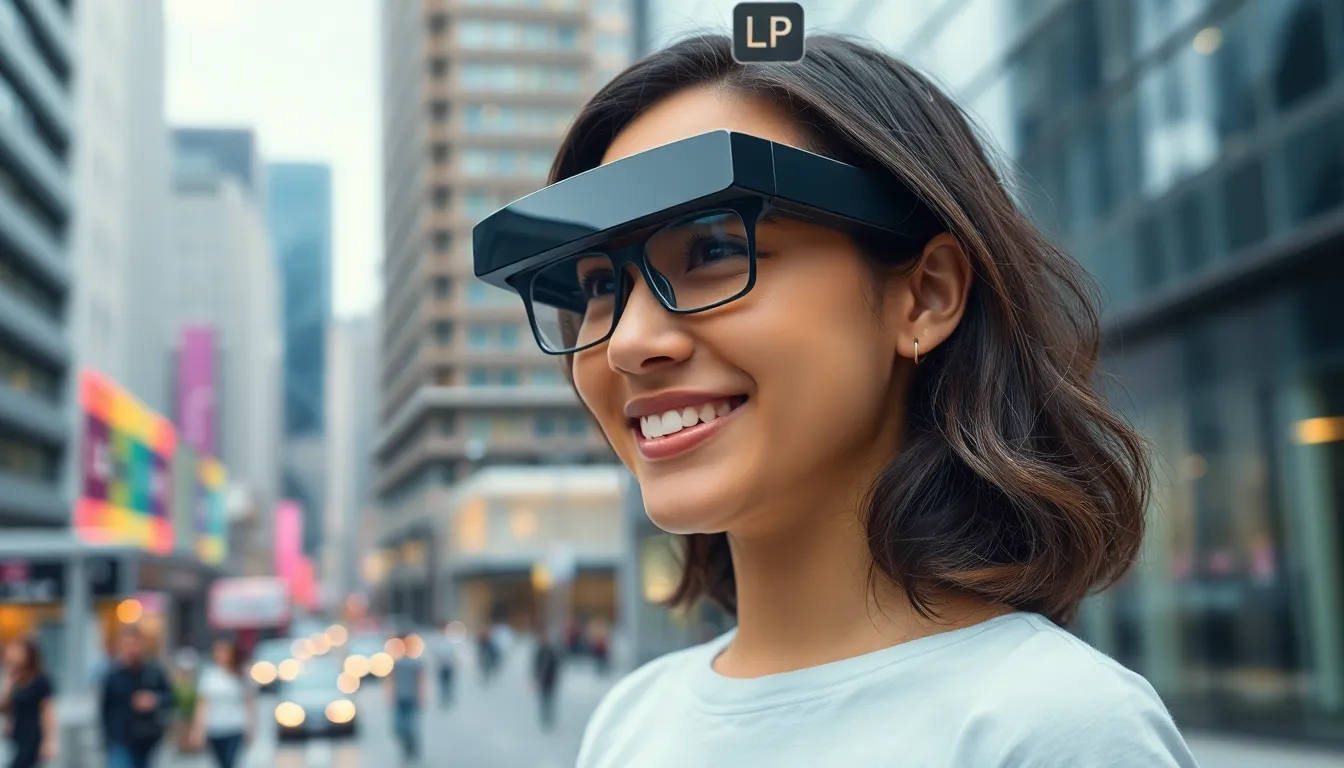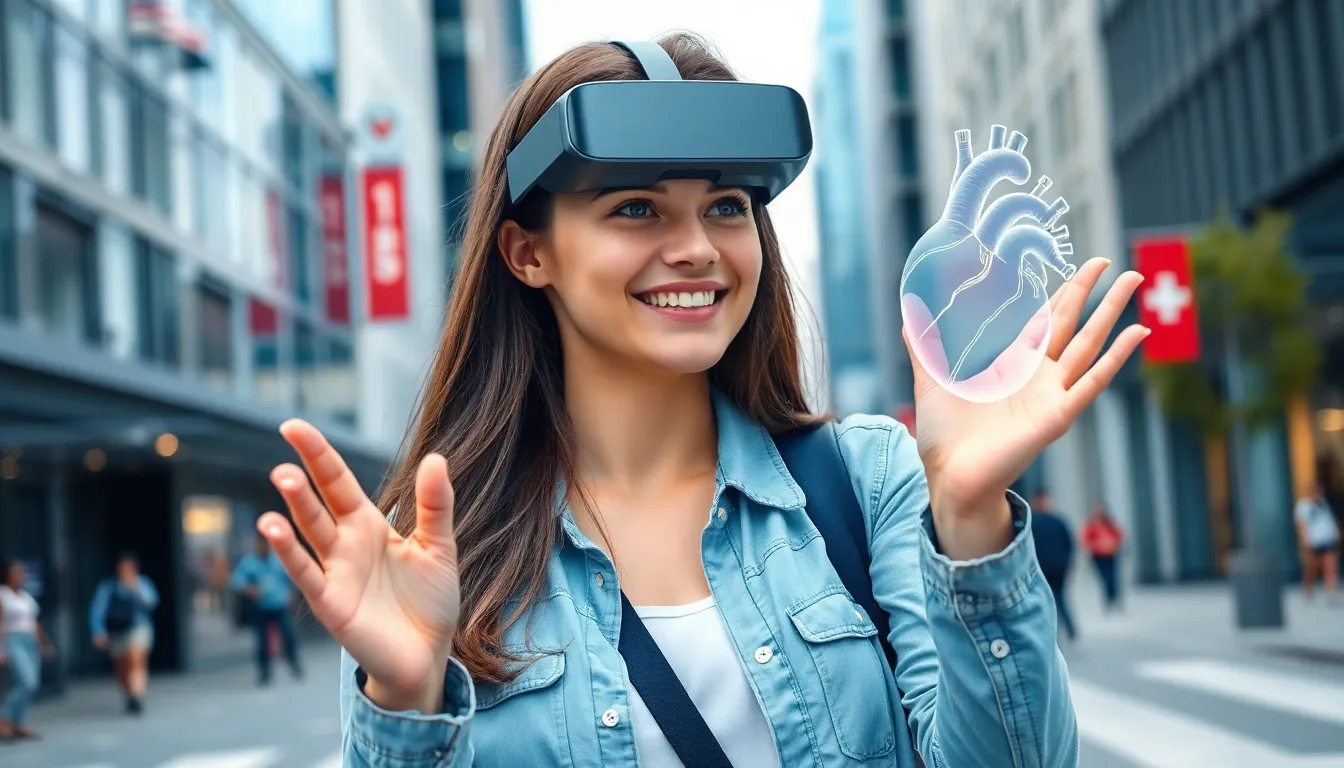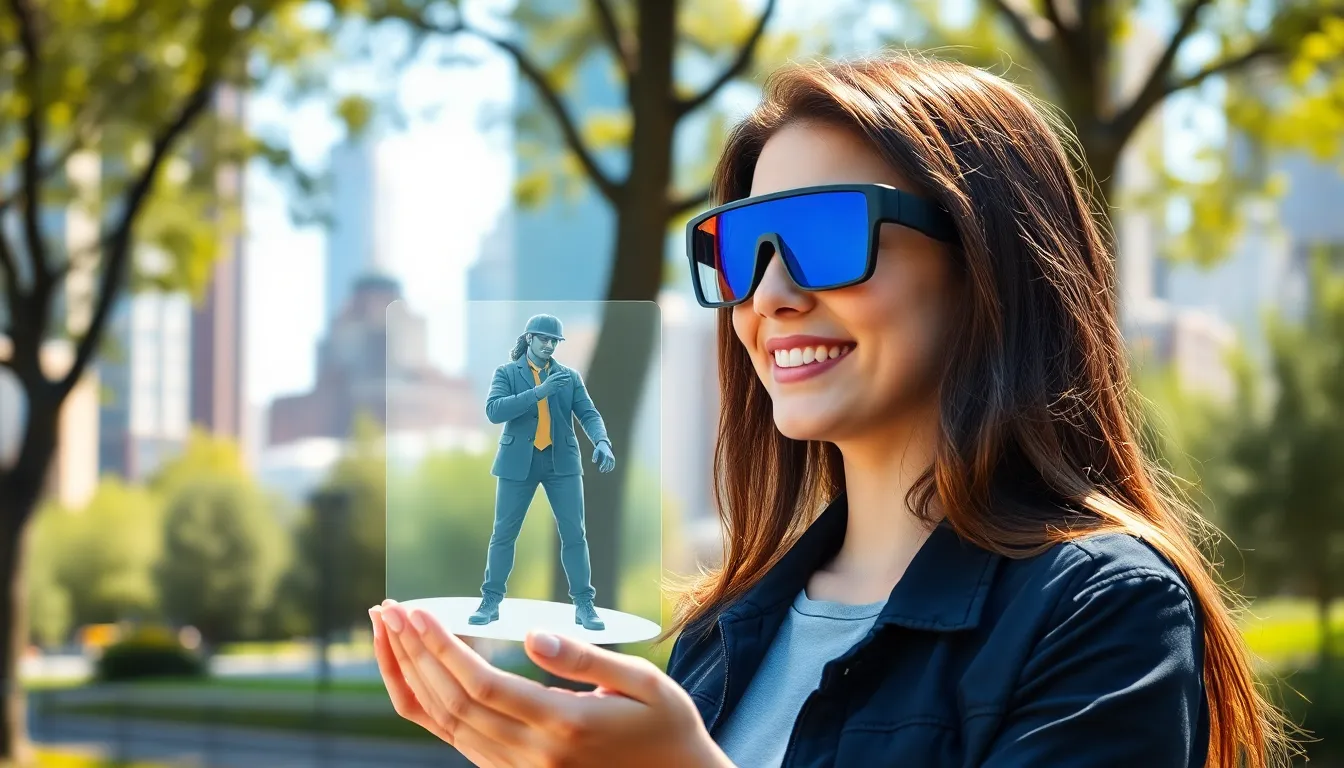In a world where online shopping often leads to wardrobe regrets, virtual fitting rooms are stepping in like a superhero in a spandex suit. Imagine trying on clothes without the hassle of changing rooms or the awkwardness of a sales associate lurking nearby. With just a click, shoppers can see how that trendy jacket or those fabulous shoes will look—without ever leaving their couch.
Table of Contents
ToggleOverview of Virtual Fitting Room Technology
Virtual fitting room technology revolutionizes the online shopping experience by allowing users to virtually try on clothing items before making a purchase. Shoppers can visualize how garments fit their body shape, size, and style preferences, enhancing confidence in purchasing decisions. Augmented reality (AR) plays a crucial role in this technology by overlaying digital images of clothing onto the user’s real-time video or images.
Various platforms employ different methods to deliver virtual fitting experiences. Some utilize 3D modeling to create accurate representations of clothes on diverse body types, while others focus on AI-driven algorithms to predict fit based on user-uploaded measurements. These innovations tailored to fit different physique types drastically reduce the headache of returns, which in the fashion industry often costs retailers up to 30% of sales.
Shoppers benefit from instant feedback on garment fit and style, which creates a more interactive experience. They can mix and match items virtually to see how they coordinate with existing wardrobe pieces. Results from recent studies indicate that over 65% of online shoppers express a preference for retailers offering virtual fitting options, highlighting a growing trend towards personalized shopping experiences.
Retailers recognize the importance of adapting to these changes in consumer behavior by investing in technology that enhances customer engagement. As competition increases, many brands are prioritizing the implementation of virtual fitting rooms to differentiate themselves in the market. This technology not only improves customer satisfaction but also influences brand loyalty and repeat purchases.
Virtual fitting room technology stands at the forefront of e-commerce innovation, representing a significant shift toward more interactive and user-friendly shopping environments. It addresses the need for practicality in online retail, making the process as seamless and enjoyable as possible.
Benefits of Using Virtual Fitting Rooms

Virtual fitting rooms offer numerous advantages, fundamentally reshaping the online shopping landscape. Shoppers gain multiple benefits, from improved experiences to unmatched convenience.
Improved Customer Experience
Enhanced customer experience stands out as a key advantage. Shoppers enjoy personalized fitting simulations that reflect their unique body shapes and sizes. Instant visualizations help individuals assess how clothing will look and fit, eliminating uncertainty. Increased engagement results from immersive interactions where users can experiment with different styles and combinations. Customer satisfaction rises significantly; studies indicate that over 65% of respondents appreciate the ability to try on clothes virtually. Retailers see improved loyalty and trust as shoppers feel more confident in their purchasing decisions.
Enhanced Convenience
Convenience represents another major benefit of virtual fitting rooms. Digital try-ons save time by allowing customers to shop from anywhere without changing rooms. Immediate fit feedback allows for quicker decision-making, streamlining the shopping process. Adjustments and selections can occur easily at home, removing pressure from in-store interactions. Users access these tools across various devices like smartphones and tablets, enhancing flexibility. Convenience reduces return rates as individuals make informed choices, leading to a better overall shopping experience.
Types of Virtual Fitting Room Solutions
Various virtual fitting room solutions enhance the online shopping experience. Notably, these solutions include augmented reality systems and 3D visualization tools.
Augmented Reality Systems
Augmented reality systems allow shoppers to see how clothing fits on their bodies using their device’s camera. Users can upload their measurements or use pre-set body types to achieve accurate fitting. Many brands integrate this technology into their apps or websites, offering an engaging way to try on clothes virtually. Layering digital garments over the viewer’s image creates a realistic simulation, making style assessments easier. The convenience of instant adjustments and rotation enhances interactivity. With these systems, over 70% of users report increased confidence in their online purchases.
3D Visualization Tools
3D visualization tools provide a different approach by using detailed models to showcase clothing items. These models represent various sizes and styles, facilitating a comprehensive view. Shoppers can rotate the garments to examine details from multiple perspectives. Information from real-time fit simulations adds to the tool’s effectiveness. By combining analytics on body shape and fabric behavior, retailers can optimize fit for diverse customers. Recent data indicates that using 3D visualization can reduce return rates by approximately 20%. These tools improve customer engagement and satisfaction significantly.
Challenges Facing Virtual Fitting Rooms
Virtual fitting rooms face several challenges that can hinder their widespread adoption. Technical limitations present significant barriers to accurate and realistic representations.
Technical Limitations
Many virtual fitting room platforms struggle with the precision of body measurements. Inaccurate sizing algorithms affect how clothes appear on users, leading to dissatisfaction. Some systems may not adequately account for diverse body shapes; this can result in poor fit visualizations. Furthermore, the quality of the augmented reality experience varies between devices, causing inconsistencies that impact user experience. Specialized hardware might enhance functionality, but accessibility remains limited for consumers. Significant investment is needed to improve calibration and support across various technology platforms.
Consumer Acceptance
Consumer acceptance presents another obstacle for virtual fitting rooms. Although a majority of online shoppers prefer this technology, some remain skeptical about its effectiveness. Concerns about privacy and data security can deter customers from engaging fully with these services. Many consumers feel uncertainty towards virtual representations due to past experiences with online shopping. Furthermore, a lack of familiarity with virtual fitting technologies may hinder genuine enthusiasm. Brands face the challenge of building trust and raising awareness to encourage broader adoption. Engaging marketing strategies alongside positive user experiences can help mitigate these concerns.
Future Trends in Virtual Fitting Rooms
Emerging technologies are shaping the future of virtual fitting rooms, creating innovative solutions that enhance the shopping experience. Increased adoption of augmented reality (AR) continues to revolutionize how customers visualize clothing on themselves. Retailers now invest in more accurate sizing algorithms, addressing past inaccuracies in virtual representations.
Integration of artificial intelligence (AI) further personalizes the fitting room experience. AI-driven recommendations suggest clothing items based on individual preferences and styles, improving customer satisfaction. Enhanced user interfaces also provide seamless navigation through various apparel options.
Virtual fitting rooms increasingly include social features, allowing users to share their outfits with friends. Social integration encourages feedback and fosters a community around retail brands. Additionally, gamification elements make trying on clothes more engaging, attracting younger consumers who value interactive experiences.
Data analytics play a vital role in shaping future developments. Retailers analyze consumer behaviors and preferences to fine-tune their virtual fitting technologies. By understanding shopping patterns, brands can optimize inventory management, reducing excess stock and return rates.
Sustainability considerations influence advancements in virtual fitting rooms. Brands are prioritizing eco-friendly practices by reducing returns through accurate fitting simulations, contributing to waste reduction. Enhanced sustainability measures appeal to environmentally conscious consumers, inviting a broader demographic.
Overall, the future of virtual fitting rooms looks promising. Continued innovation around technology, personalized experiences, social engagement, and sustainability will likely drive broader adoption in the retail industry. By staying ahead of these trends, retailers can create a more fulfilling, interactive shopping journey for their customers.
Virtual fitting rooms are transforming the online shopping experience by offering convenience and personalization. Shoppers can confidently try on clothes from the comfort of their homes while enjoying instant feedback on fit and style. As technology advances with augmented reality and AI, retailers are better equipped to meet consumer needs and reduce return rates.
Despite challenges like technical limitations and consumer skepticism, the potential for virtual fitting rooms remains significant. With a focus on improving user experiences and fostering trust, brands can leverage this innovative technology to enhance customer engagement. The future holds exciting possibilities as retailers embrace these trends, creating a more interactive and satisfying shopping journey for all.






